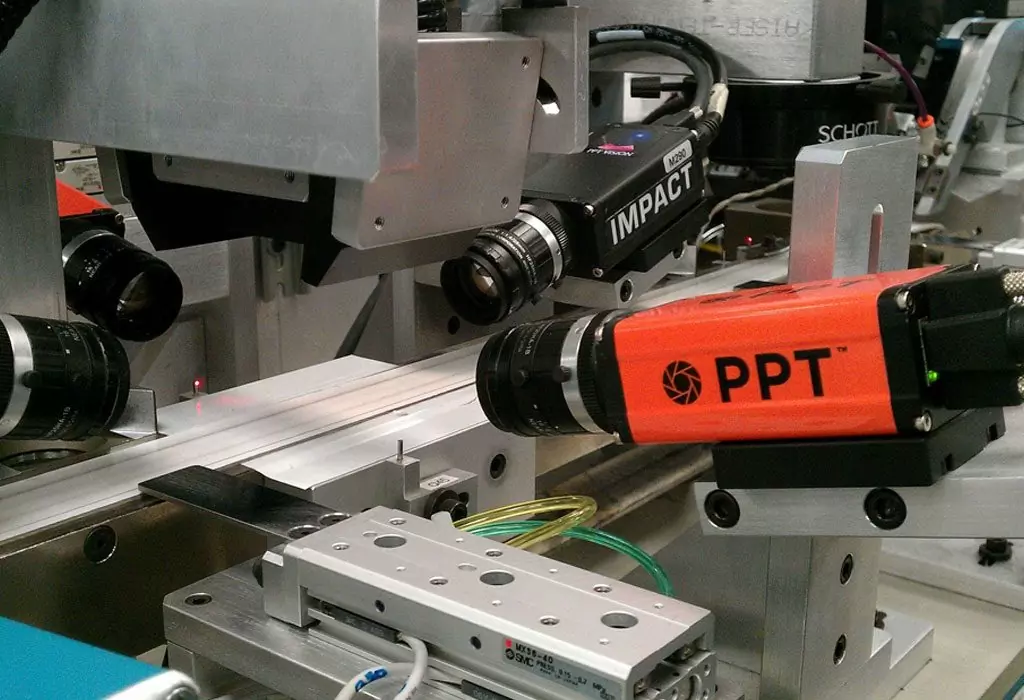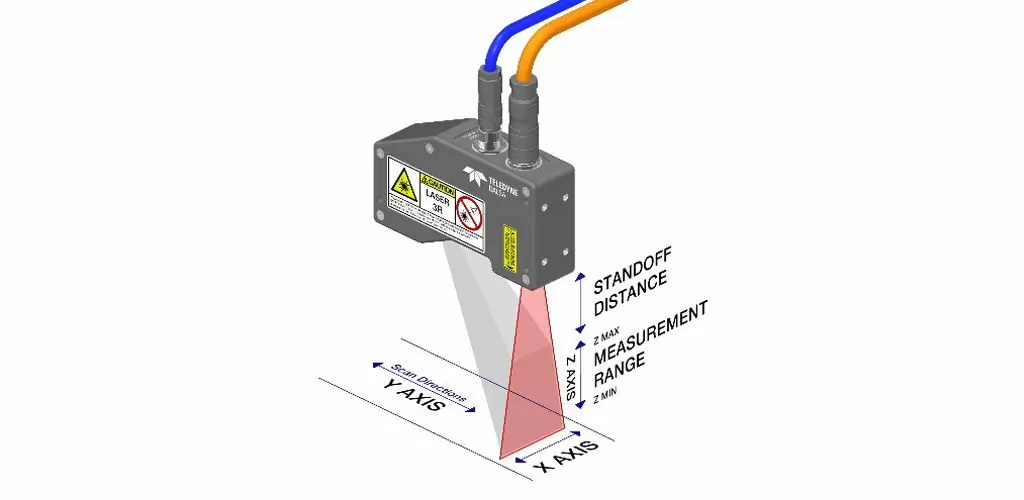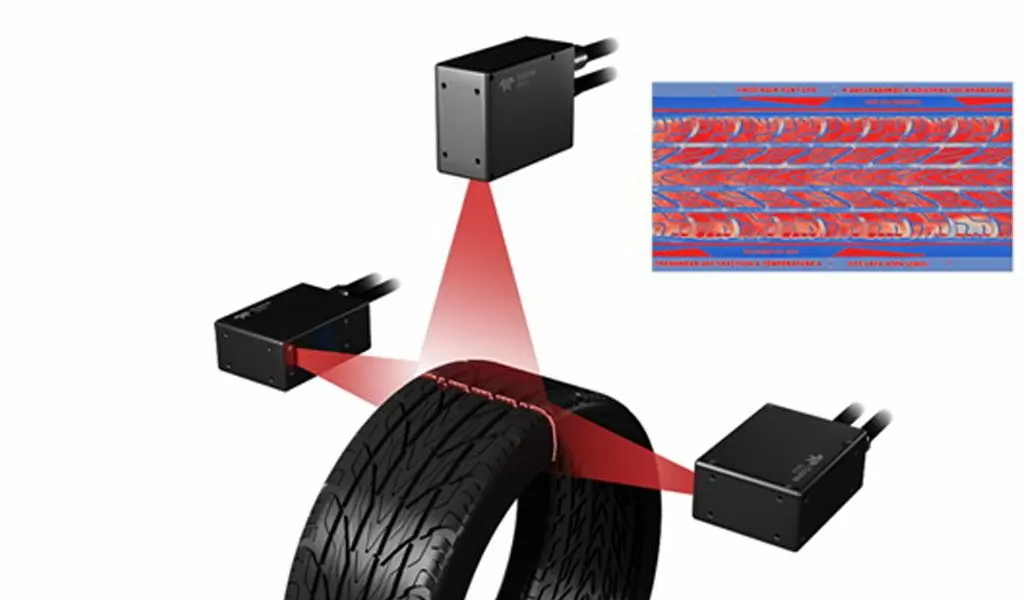3D vision technology is going mainstream — and that’s a good thing. Technological advancements and cost reductions have made 3D vision a technology that can be used in a variety of applications and industries, including semiconductors and electronics, electric vehicle battery manufacturing, automotive manufacturing, food production, and pharmaceutical packaging. One will see 3D sensors and profilers in the fields of manufacturing automation, robotic guidance and quality control.
In the past, 3D systems were too slow to keep up with production, too expensive, difficult to configure, and difficult to maintain. Instead, system designers rely on (1D) and (2D) scanning imaging techniques to perform inspections in complex camera and lighting configurations, using software to calculate depth information.

Simultaneous developments in sensor quality and speed, embedded vision, FPGAs, lasers, optics and intelligent systems make 3D imaging a more viable option today. Today’s 3D imaging technologies are cost-effective, reliable, repeatable, easy to implement, and proven in a variety of demanding applications. While 1D and 2D technologies are still widely used, 3D technologies now offer a reliable alternative in almost all situations.
The Z-Trak2 is a family of 3D profile sensors based on Teledyne Imaging’s 3D image sensor technology. The Z-Trak2 3D profile sensor provides high-speed in-line inspection via a stable 5GigE interface.
3D Laser Triangulation Technology
One of the 3D imaging techniques that makes this possible is 3D laser triangulation. The technology has been around for a long time, but progress has only recently been made, and its use in online applications has been limited due to the complexity of calibration, limited scan rates, required computing power, and on-site maintenance costs.
In a typical laser line profiler, the laser line is projected onto the object and imaged using a 2D (area/matrix) image sensor. After determining the position of the laser stripe on the image sensor, the profiler provides lateral (X-axis) and depth (Z-axis) information resulting from optical triangulation of the laser stripe. The set of XZ pairs generated along the laser line is called a profile. The distance between two consecutive contours in the direction of motion constitutes the third axis (Y). By scanning the object in this way, we obtain the surface scan information (X, Y, Z) of the object.

Achieve Performance
Leveraging advances in high-speed CMOS image sensors and the power of modern FPGAs, fast and reliable embedded systems allow 3D profile sensors (for a given measurement range) to provide a larger field of view and unprecedented speed for High Dynamic Range (HDR) imaging . By incorporating features such as support for diffuse and specular configurations, and high-speed data transfer interfaces like 5-GigE, 3D profile sensors are better equipped to meet the challenges posed by today’s online 3D machine vision applications. These sensors feature a wide range of optical arrangements, use a scalable processing architecture, and provide height and width resolution down to a few microns.
better Usability And Integration
The integrated laser triangulation profiler is easier to use and set up and does not require special lighting arrangements. By cleverly balancing the various building blocks of the profiler design (image sensor, laser capability, optical path, mechanical and electronic components), accurate measurements can be obtained at relatively low cost.
As the profiler becomes more reliable and the technology matures, users may be more willing to choose it as the technology of choice. For example, laser triangulation techniques have a good tolerance for vibration. By scanning, small vibrations can help reduce the overall noise produced by laser speckle.
The clever architectural design allows you to further enhance the system’s capabilities by adding processing modules such as artificial intelligence, pixel processing, and smart sensors.
System design for a wider range of applications
Today, laser profilometers combine HDR capabilities and reflection cancellation algorithms to measure object characteristics, albeit with varying degrees of surface reflection. In addition to the eye-safe red laser, models with blue laser configurations are also available, suitable for scanning objects with highly reflective surfaces or invisible to the red laser.
The development of modern electronic technology and artificial intelligence (AI) technology has made the system more powerful, and the cost is kept within a reasonable range. For applications where the field of view of a single 3D profile sensor cannot meet the requirements, users can combine multiple 3D profilers for simultaneous inspection, or use multiple 3D profilers when objects need to be inspected at 360°.

Examples of such applications include the inspection of large wood, metal, plasterboard, plastic and various stampings. Stampings with asymmetric features on each side require the use of multiple sensors around the object. This requires all sensors to be configured in an appropriate way so that the resulting 3D images represent objects in a realistic way. To achieve this, all sensors need to be precisely synchronized to generate a combined image for easy measurement.

Limitations And Other Considerations
Although 3D laser triangulation technology has made great strides in performance, cost, and usability, there are still some issues that need to be considered in order to achieve successful system integration. Occlusion is often an issue due to the viewing angle required for laser triangulation. Occlusion is the shadow created by the positioning angle of the profiler caused by geometric triangulation. One solution is to use one or two lasers and multiple cameras. Sensors can also limit the overall speed and performance of the system. Another challenge is laser speckle, which is inherent noise from the laser itself that reduces the resolution of the system.
Key Markets And Applications
Nonetheless, systems based on 3D laser triangulation technology are still suitable for a wide variety of applications, including in-line height measurement in numerous market segments such as electronics and semiconductor production, robotics, automotive manufacturing and general factory automation.
Industry
- Online test
- Volume measurement
- Robot guidance
- Gap and step measurement
- Surface inspection
Electronic
- Chip wire inspection
- BGA and micro BGA inspection
- Solder Paste Inspection
- PCB bare and assembled board inspection
Machine Vision
- Part inspection
- Part identification
- Imprint OCR
- Embossed barcode
- Bead inspection
- Pick-and-place
- Timber and lumber testing
- Angle measurement (end)
